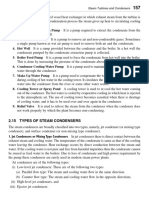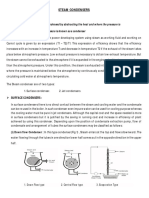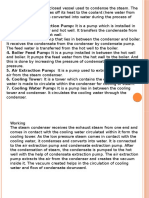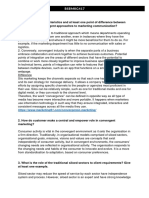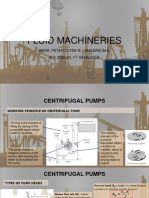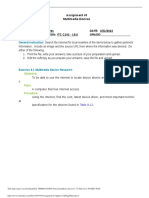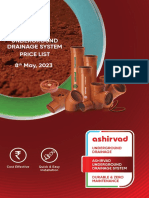0% found this document useful (0 votes)
47 views20 pagesSection B PDF
Steam condensers are devices that condense steam and transfer the heat to cooling water. There are two main types: jet condensers where steam and water directly contact, and surface condensers where they are separated by tubes. Surface condensers can be down-flow, central flow, or inverted flow depending on the direction of steam and water flow. Jet condensers include parallel flow, counterflow, low-level counterflow, high-level counterflow, and ejector types. Condensers improve steam engine or turbine efficiency by condensing exhaust steam for reuse as boiler feedwater.
Uploaded by
Kamal YadavCopyright
© © All Rights Reserved
We take content rights seriously. If you suspect this is your content, claim it here.
Available Formats
Download as PDF, TXT or read online on Scribd
0% found this document useful (0 votes)
47 views20 pagesSection B PDF
Steam condensers are devices that condense steam and transfer the heat to cooling water. There are two main types: jet condensers where steam and water directly contact, and surface condensers where they are separated by tubes. Surface condensers can be down-flow, central flow, or inverted flow depending on the direction of steam and water flow. Jet condensers include parallel flow, counterflow, low-level counterflow, high-level counterflow, and ejector types. Condensers improve steam engine or turbine efficiency by condensing exhaust steam for reuse as boiler feedwater.
Uploaded by
Kamal YadavCopyright
© © All Rights Reserved
We take content rights seriously. If you suspect this is your content, claim it here.
Available Formats
Download as PDF, TXT or read online on Scribd
/ 20













